How to plant roses in the garden
Content
Pick-up location
The answer to the question of how to plant a rose begins with choosing the right place. Do you want to break a gorgeous rose garden, plant one graceful bush in the middle of the lawn, disguise the blank wall of the house with a climbing rose or decorate it with an arched entrance to the site, plant several ground cover flowers in a flower bed or decorate a resting place in the depths of the garden with tea hybrids, the main thing is that the planted rose likes this place, it must meet all her requests. Only then will a rose, planting and caring for which in the open field, do not cause trouble, will delight the owners with a healthy look, abundant flowering, and a wonderful aroma.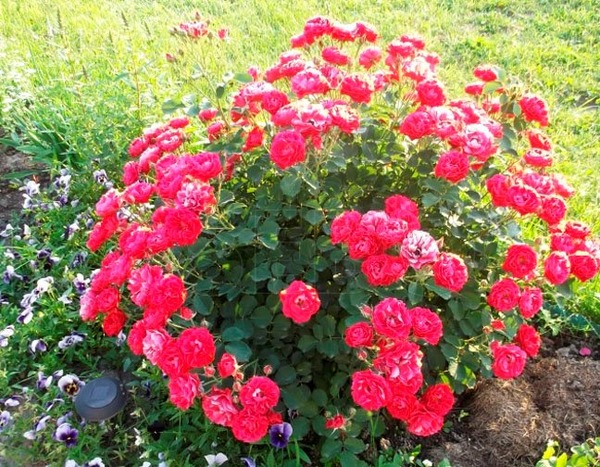
Almost all roses, regardless of varieties, love open, sunny places. And this is not only the memory of the thermophilic Asian progenitor of almost all modern varieties, because even the wild rose hips prefers open edges, and not the forest shade. But some delicate creatures in hot weather can get burned from too bright sun or sad from overheating of the soil. Most varieties react painfully to cold winds and drafts. Without exception, everyone does not want to grow on wetlands or too heavy clayey lowlands, where melt or rainwater can linger for a long time. As befits a queen, the rose prefers to reign on a dais.
It is necessary to make sure that the groundwater does not approach the surface by more than one and a half to two meters. In grafted plants, the roots grow up to one and a half meters in depth, and since the length of the root correlates with the height of the aboveground part of the plants, in some varieties they can grow even more. Root roses themselves have a shorter root system, lateral roots develop more in it, which lie in the surface fertile layer, but with appropriate care, they can also develop stronger deeply growing roots.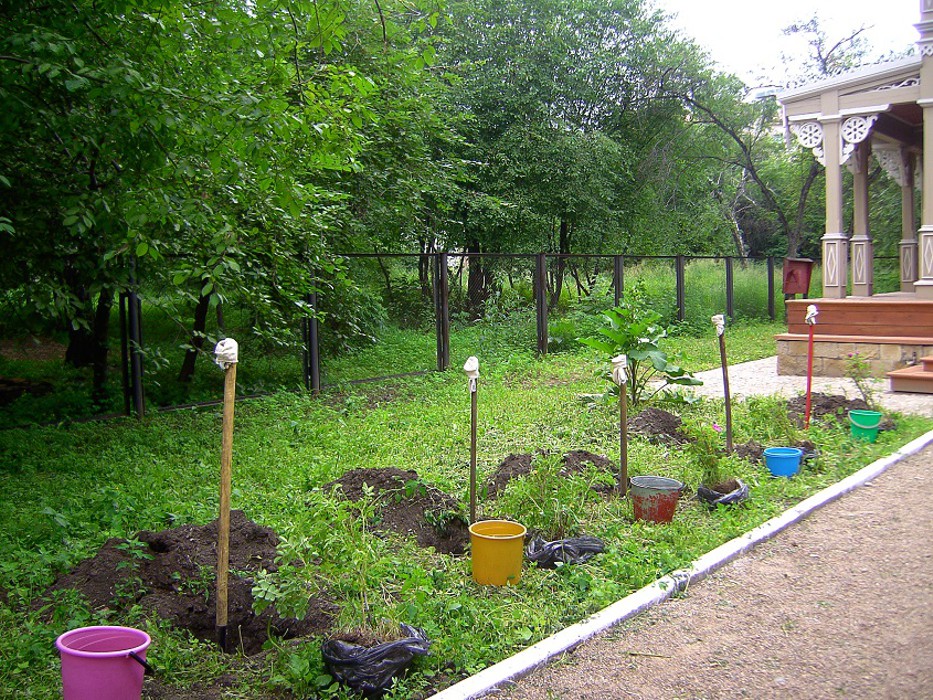
This is the place that should be chosen: sufficiently bright, protected from the north wind and drafts, preferably elevated. This can be the southern slope (large bushes will perfectly cope with the task of strengthening it), the southeastern or southwestern part of the site, protected by the wall of the house from the cold wind.
When choosing a place, you need to ensure that the gentle beauty does not fall into the shadow of large trees, houses or other buildings in the morning or evening hours, but if a light shadow forms during the day, it will be great.
Another important question is how to properly plant plants in the ground relative to each other. Planting too often will not benefit the bushes. If they shade each other or too overgrown shoots will impede the free movement of air among them, this can affect flowering, even provoke diseases.You can plant them later, but roses do not like transplants, they tolerate them painfully, so it is better to foresee everything in advance, taking into account the future growth of an adult bush.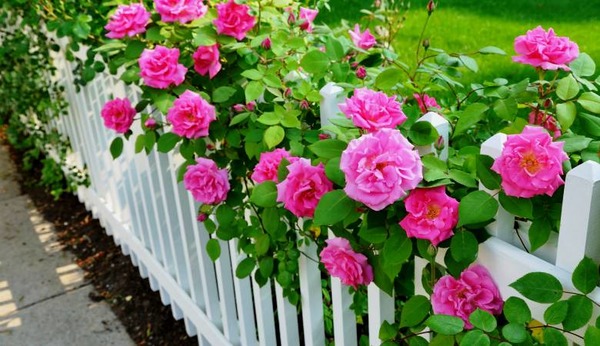
Climbing roses are planted at a distance of two meters from each other (or from other plants), and some highly growing varieties even after 3 - 5 meters. Standard and bush varieties are planted every 3 m. If you need to create a hedge, then the bushes are placed at a distance of half the height of an adult plant from each other. Ground cover varieties are planted in three to four plants per square meter. Some strongly growing creeping roses recommend planting even less often - only one per square meter. Most flower bed roses are placed after 40 - 60 cm, but there are very large bushes, then it is better to leave up to 80 cm.
Video "How to plant roses"
From the video you will learn how to plant the bushes correctly.
Land preparation
All roses prefer loose, breathable soil, slightly acidic or neutral, rich in humus. Heavy clay soils retain moisture, warm up poorly, and do not develop enough roots.
Very light sandy soils are not only insufficiently fertile, they also change temperature too quickly - they quickly overheat in the heat and also quickly freeze in frost. Therefore, before planting roses, you need to prepare the soil in accordance with their requests.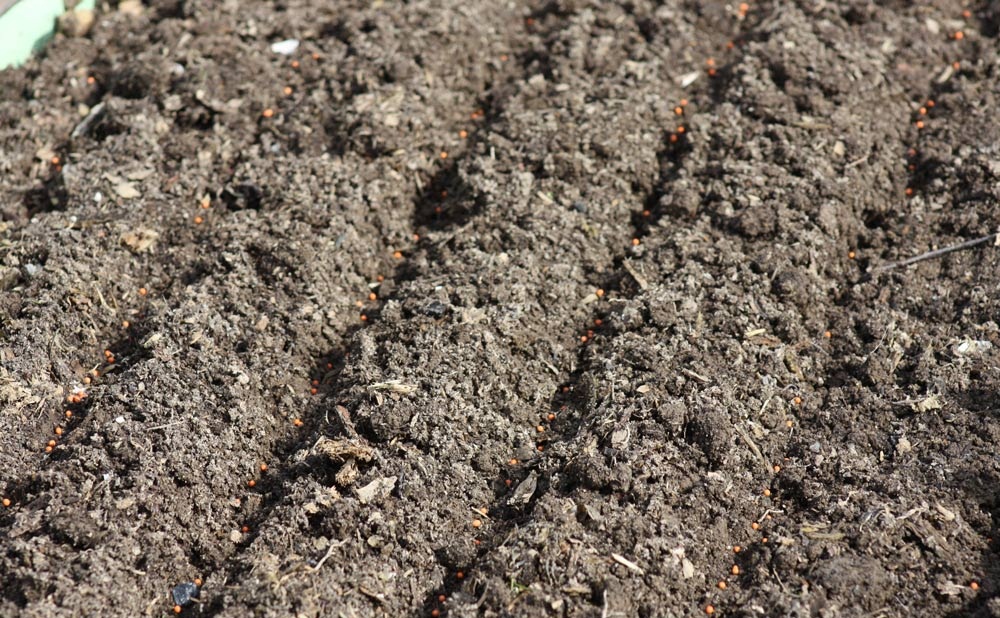
The site for future planting must be thoroughly dug up at least 30 cm deep, remove all plant debris, roots of perennial weeds, stones and large clods of rough earth from it. If the soil is too acidic, then dolomite flour or lime should be added to it. And after two weeks, you need to add compost or humus, bone meal. Too heavy soil is mixed with peat and sand, and peat and clay (dried and ground to small fractions) are added to too light. All this preparation is done in the fall, preparing the site for spring plantings. If the bushes are planted in the fall, then such preparation is usually carried out a month before planting itself.
The land will have to be prepared on any site, since it is almost impossible to find the ideal soil for roses in nature, so all growers do it, regardless of experience.
Seedling preparation
Saplings, of course, are best bought from nurseries. Moreover, purchasing them somewhere nearby means getting a guarantee of survival rate, since they have grown in the expectation of similar climatic conditions. If you write it out from afar, then there will be no such confidence.
When buying, you need to take a good look at the seedlings. If the roots are open, then you need to check the condition of the shoots and roots. Both should be healthy and level, without visible damage or stains. The shoots should have a dark green color and dormant buds, if the buds have already awakened and are growing, this weakens the plant, because they feed without the participation of the root system, from the internal reserves of the plant torn from the ground. The roots should also be healthy, with no cut or overdried fragments. Before planting, open roots are soaked in water for a period of 12 to 24 hours. Before planting, the roots are slightly shortened, the shoots are also cut off: the branches of climbing roses are shortened by 30 cm, and in park roses by one third of their length.
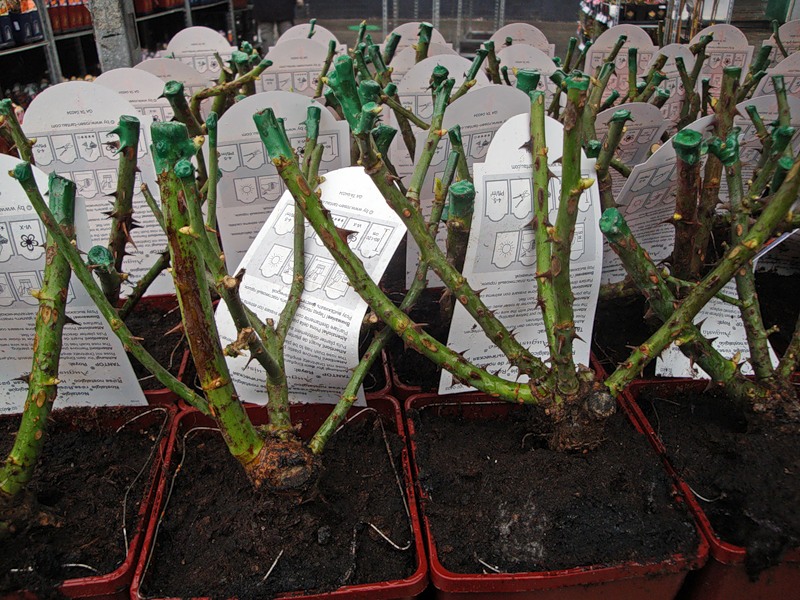 If a seedling is purchased in a container, then it must be planted with the same clod of earth, so it will more easily take root on the site. But when choosing, it is worth examining the shoots carefully. They must be whole, healthy, with living kidneys. Particular attention should be paid to the root collar, it should be 7-10 mm in diameter with intact bark. The soil should not be overdried; until planting, it must be kept slightly moistened.
If a seedling is purchased in a container, then it must be planted with the same clod of earth, so it will more easily take root on the site. But when choosing, it is worth examining the shoots carefully. They must be whole, healthy, with living kidneys. Particular attention should be paid to the root collar, it should be 7-10 mm in diameter with intact bark. The soil should not be overdried; until planting, it must be kept slightly moistened.
If the seedlings were bought in advance, and the cold spring still does not allow planting, then they can be kept in the cellar (or even in the refrigerator) at temperatures from +1 to +5 degrees. Specimens with exposed roots can even be dug into wet sand.
Landing
Roses are planted in the ground in spring, when the ground has already thawed and warmed up to +10 - +15 degrees, usually in late April or early May. In the fall, planting most varieties is even better, but it is difficult to guess the planting time, this must be done while it is still warm enough for new roots to begin to grow and old ones have settled well, but new shoots should not grow, which still will not survive the winter. Planting should take place 2 - 3 weeks before the arrival of cold weather, so that the plant takes root and goes well during the dormant period. It is difficult to guess this time, autumn often presents us with surprises.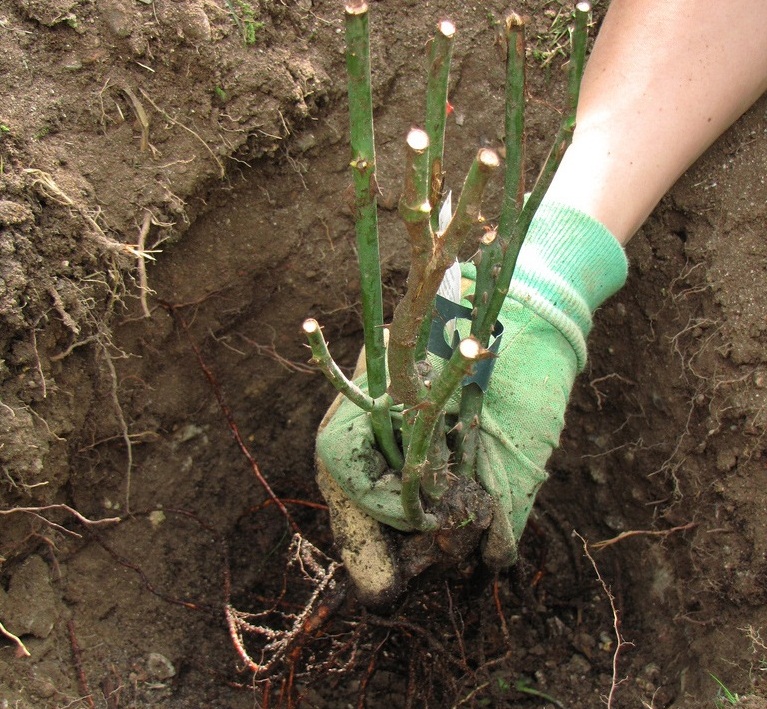
Bushes planted in autumn, if they managed to take root well and easily survived the winter in a shelter, begin to grow well in spring, form the root system and the aerial part at the same time, they can bloom in the first year after planting and do it very beautifully. Spring-planted roses are about 2 weeks behind, you need to monitor them more, pinch off the buds so that they do not lose a lot of energy for flowering to the detriment of the development of shoots and roots. They are usually not allowed to bloom in summer, unless 1 - 2 flowers in August, which are not considered a real bloom, but simply help the plant to prepare for wintering.
It is better to plant standard roses in spring, own rooted roses of all varieties too. They have many roots located in the surface layer of the earth, which may not survive the first wintering.
Planting is usually carried out dry or wet, which one to choose or how to plant a rose correctly is up to the florist himself, especially since the methods are equally applied in any climate. In any case, a hole is dug in the prepared area, the width and depth exceeding the root system of the seedling. Its bottom is loosened (for this you can use a pitchfork), the earth is mixed with humus, compost, ash and complex mineral fertilizers. 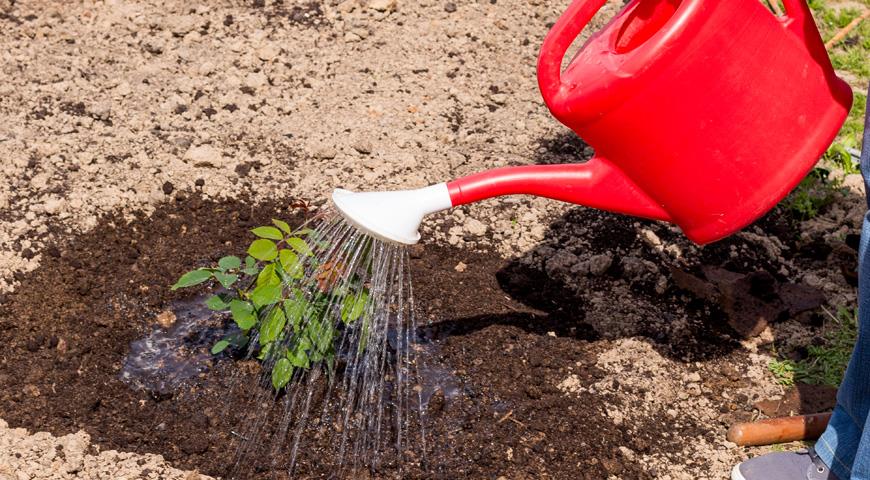 This soil with fertilizers (and not the fertilizers themselves) is poured into a slide to the bottom if a seedling with an open root is planted. The seedling is lowered to such a depth that the root collar is 3 - 5 cm below ground level, the roots are straightened along the slopes of the earthen slide and carefully sprinkled with the rest of the earth. After that, it is watered abundantly so that the water passes to the very tips of the roots, so that all voids disappear, and the wet earth firmly accepts the roots of the new plant.
This soil with fertilizers (and not the fertilizers themselves) is poured into a slide to the bottom if a seedling with an open root is planted. The seedling is lowered to such a depth that the root collar is 3 - 5 cm below ground level, the roots are straightened along the slopes of the earthen slide and carefully sprinkled with the rest of the earth. After that, it is watered abundantly so that the water passes to the very tips of the roots, so that all voids disappear, and the wet earth firmly accepts the roots of the new plant.
When planting a seedling with an earthen lump, they do not make a pile of earth, but simply pour it on the bottom, place an earthen lump on it and fall asleep.
With the wet method of planting, water is poured into the pit, often with an agent that stimulates the growth of roots, and the root system is placed in it. Then the whole pit is covered with earth.
After planting and watering, the land around the seedling and even the shoots themselves are mulched with peat, compost, soil or sawdust for a week or two. The entire seedling is shaded, gradually accustoming it to the sun, if this happens in the spring. And in the fall, the young plant is watered several more times, and after 3 weeks it is covered for the winter.
Young bush care
The first year of life, a young bush is allowed to get used to a new place, its task is to form a well-developed root system and healthy strong shoots. All care for him is subordinated to this. The plant is gradually accustomed to the May sun, shaded for the first two weeks, protecting it from direct sunlight. Remove the buds so that the flowering does not weaken it, pinch the shoots to increase branching.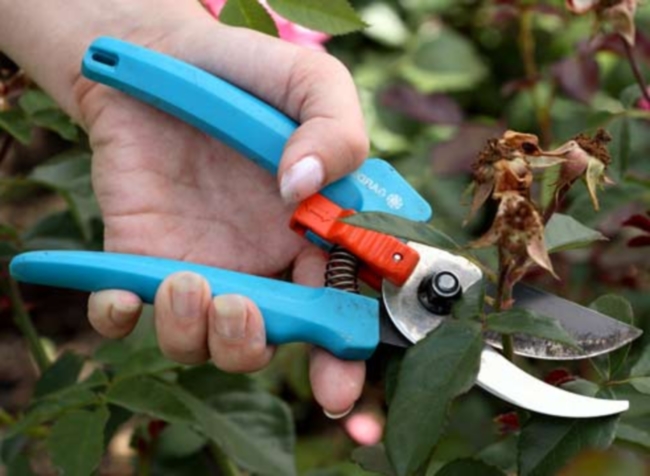
Water should be watered with settled water at room temperature in the morning or evening, and this should be done so that water does not get on the leaves. After watering or rain, the next day, be sure to loosen the ground under and around the bush. Watering is not necessary often - a rare abundant watering allows all the roots to be saturated with water, makes them grow stronger in depth and in breadth, forming a strong root system.Frequent moderate watering promotes the growth of side roots at the very surface of the earth, and this does not make the plant strong, always keeps it, depending on the weather. If the roots are thin and superficial, they quickly overheat in the heat along with the top layer of the earth and freeze with the onset of frost, such a plant is often sick and can freeze out in the harsh winter. A well-developed root system with thick, deep-seated roots is less dependent on the weather. Moreover, even if the shoots are frozen, the root will allow the plant to recover.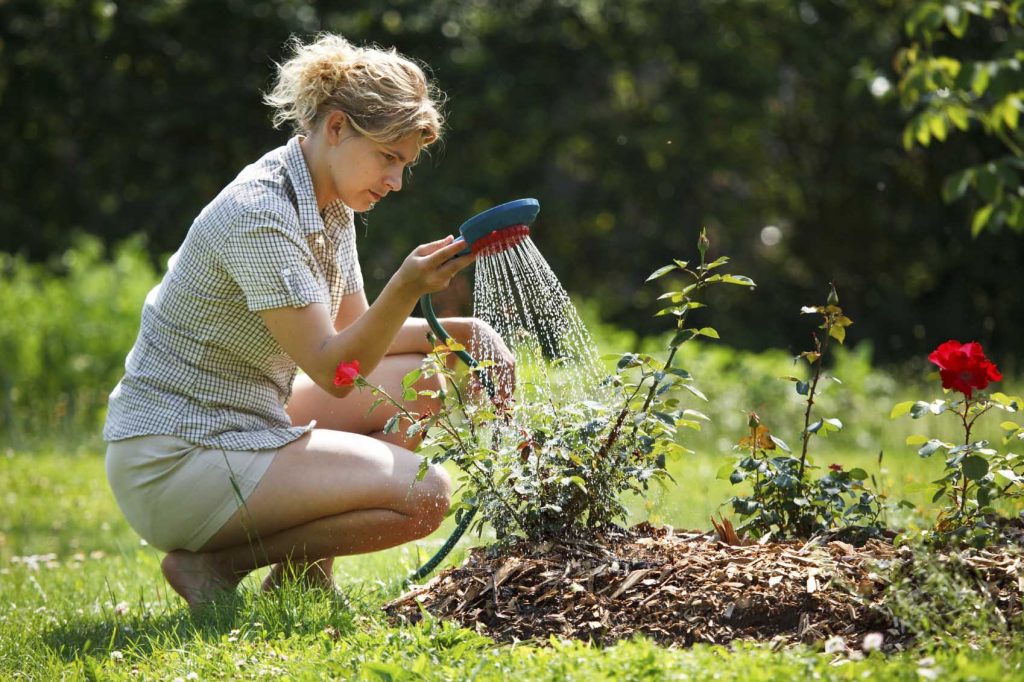
If the soil has been properly fertilized before planting, then this should be sufficient for the first two years of growth. They begin to feed the plants in the third or fourth year, when the roses are in full bloom, when a large bush has already grown. When the soil is very poor, it was poorly prepared for planting, then you can water it several times until mid-July with a solution of slurry (ten times diluted) or bird droppings (twenty times diluted). At the end of August, you can add potassium-phosphorus mineral fertilizers. Fertilizers are diluted with water and applied after the main watering.
Cut off young bushes in the fall before sheltering for the winter.
Video "Leaving"
From the video you will learn how to properly care for the bushes.



